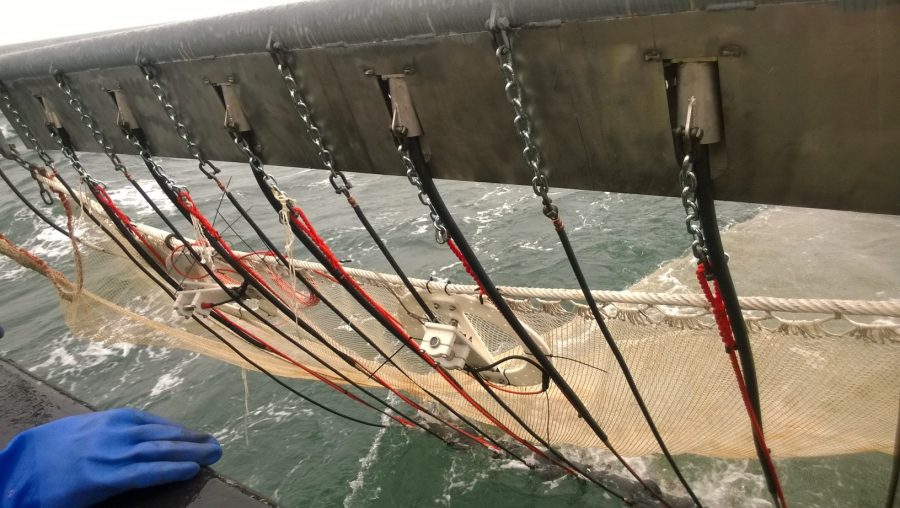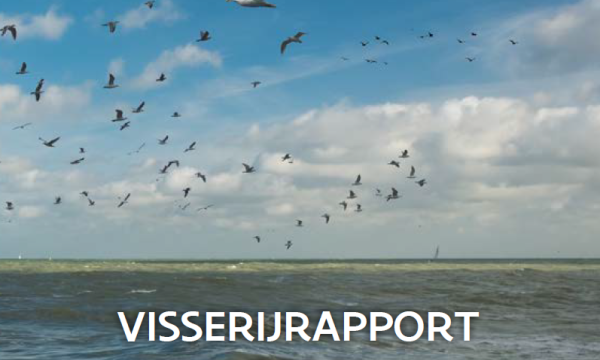Press release Shrimp electropulse fishing: Study of possible side effects delivers reassuring results

The short electric pulses (“pulse”) used in shrimp electropulse fishing do not cause any malformations in either fish eggs or larvae. During the experiments, the eggs and larvae develop normally. Only minimal losses were observed in the young life stages of some fish larvae.
A certain reservation in society exists regarding 'electric fishing'. Stories of alleged biological impacts on certain marine species can be found in several countries. ILVO-Ghent University Dr. Marieke Desender looked for confirmation or denial of any possible negative side effects of the shrimp pulse during several extensive experiments.
In addition to searching for any effects on the first life stages of fish, Dr. Desender also researched whether the pulses can influence on the predatory behavior of shark species that use a typical electro-sensitive organ to sense their prey. "The tested dogfish appear to be unaffected by the pulses during their feeding behavior."
Previously repeated scientific research has shown that applying the electropulse for shrimp fishing has considerable sustainability benefits related to discards, seabed disturbance and fuel consumption. The shrimp electropulse results in much more selective catches and significantly less unwanted bycatch. Trawls fitted with electrodes do not need to 'plow' through the seabed, thus reducing seabed disturbance. Lower fuel consumption with the electropulse is good for less CO2 emissions and for the economic health of the fishing sector. "This new research results opens perspectives for pulse fishing as a technique for the shrimp fishermen."
‘Scaremongering’ related to eggs and larvae of sole and cod?
The hypothesis was that shrimp pulse fishing could threaten the growth of fish stocks due to damage or extra mortality of the eggs, larvae or juveniles. Shrimp fishing is performed in shallow coastal waters. The water column of these waters is where the so-called “early life stages” of species such as sole and cod are floating. During the scientific experiments, Marieke Desender exposed different egg and larval stages (7 growth phases for cod, and 2 growth phases for sole) for 5 seconds at 5 pulses per second. "The field intensity, duration, frequency, and amplitude are an overestimation of what can be experienced in the sea as the pulse passes: namely only if they are flat against the electrode (the cable that sends the pulses) and during conditions of very slow sailing." No malformations were observed and there was no difference in survival between the control groups and the groups exposed to the pulse. The only minor exception was for the youngest stages of cod larvae (2 and 26 days old), where we observed a difference in mortality of 12% and 16%, respectively, compared to the normal losses in that phase of life. There was no influence at the intermediate stage, i.e. larvae of 11 days old." In the wild, less than 1% of all fish eggs eventually grow into a mature fish, so high mortality is present in all early life stages. The probability that the observed extra mortality in 2 of 7 larval stages could have an effect on the total population renewal of cod due to shrimp pulse fishing is very small. Furthermore, only a small percentage of the eggs, larvae and juveniles float in the bottom zone of a strip where the drag pulse network activates its stimulating electric field." Further studies of long-term effects on population renewal are planned.
“Scaremongering” related to food seeker organs of shark species?
Dogfish, and sharks skates and rays in general, use electro-sensitive organs to hunt. These organs enable the animals to detect electric fields generated by the respiration or the heartbeat (among others) of their prey. The hypothesis was that these search organs could be disturbed if the sharks or skates were foraging in the vicinity of shrimp pulse fishing.
"This is not the case either, according to our research. In our tests on dogfish, pulses of different intensity were used (the pulse used for shrimp, which is less intense, and that used for flatfish pulse fishing). The time between the start of the search of the dogfish until the effective bite (biting a simulated electric field of prey) was not influenced by existing fishing pulses," says Dr. Desender. So there is no connection between the way the sharks foraged and whether or not pulses are being generated. The ability of sharks to detect and attack their prey is therefore not affected by either type of available pulse fishing gear.
Conclusion: pulse fishing, yes or no?
Marine scientist Hans Polet (ILVO) has been working on electropulse fishing for 20 years. "We have been eagerly awaiting the results of these experiments. This is good news for a technique that we hold in high regard based on its considerable, well-documented ecological advantages." Recently, the European Parliament voted to ban all forms of pulse fishing. That dossier is now on the agenda of the trilateral consultation with the European Commission and the Council of Ministers. The political position for a ban may be related to the concerns of the English, Belgian and French fishermen who observed fishing pressure in the southern North Sea, apparently primarily due to the activity of the 75 Dutch fishing vessels equipped with an electropulse that targets flatfish (sole). The Dutch government started an initiative to equip a large number of boats with the flatfish electropulse in the form of a 'scientific experiment'. The result was a competitive advantage for the Dutch, to the detriment of traditional fishing techniques. According to Dr. Hans Polet, shrimp and sole pulse fishing must be assessed separately. “We aim to create a more nuanced picture of pulse fishing. According to our research, the shrimp pulse fishery is clearly viable. More (small-scale!) research is needed to assess the effects of sole pulse fishing. But the ecological advantages of electropulse fishing make it interesting enough to clear a path toward implementation, regulation, control and scientific supervision."


